Here is a Top 10 list of the panel’s best moments.
1. Mark Frauenfelder, founder of Make Magazine and BoingBoing, said his panel guests all had a few things in common. As makers, they all experiment in the broad spectrum. They are excited and interested in many things and are willing to engage in playful experimentation.
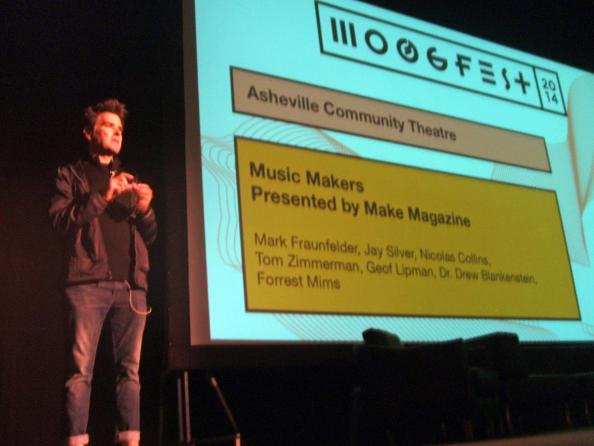
2. Jay Silver, CEO of JoyLabz and the first Maker Research Scientist at Intel Labs, said he wanted to build a perfect planet as a kid. Now, he just wants to live in a world where everyone gets to create. Silver says if we decentralize design, that leaves the world with about 7 billion creators.
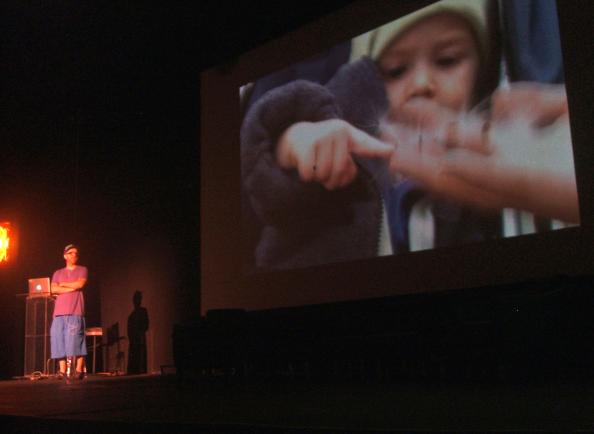
3. Nicolas Collins, author of Handmade Electronic Music, has been inventing electronic music devices since the early 1970s. These include a reverse guitar (pictured), a radio DJ device, and hacking portable CD players. Apparently CD players make noise, even when paused. Collins said Bob Moog helped bring a lot of electronic music from the studio onto the stage. The old, homemade electronics were cumbersome to transport.

4. Thomas Zimmerman, a master inventor with IBM Research, takes his maker program to at-risk schools in California. These children regularly encounter violence during their school day. Zimmerman helps students build electronic guitars from PVC pipe, work on cars, and even go SCUBA diving. He has seen the impact of science on the students’ lives. He says if you teach kids the joy of building things, you will save lives. When kids have a little creative freedom, they will surprise you. Sadly, when you Google “scientist”, these are the images that pop up.

5. Geof Lipman leads the team of engineers at LittleBit, a company that produces small electronic modules. These modules snap together with magnets to create circuits for fun and prototyping. He says that we are immersed in technology, but not many people actually know how it works. LittleBits takes out the mystery. And, if you don’t want to buy, he says their designs are all open source. Just go to their website and take what you like:
http://littlebits.cc/
6. Dr. Drew Blankenstein has created many electronic instruments for musicians such as Kraftwerk and Trey Anastasio in his New York laboratory. Blankenstein said the transistor changed music in the 20th century. It impacted the delivery of music with portable radios, how songs are created, and then later birthed an entire new type of music we now call electronica.
Dr Drew (center) shows off some of his creations to the crowd.
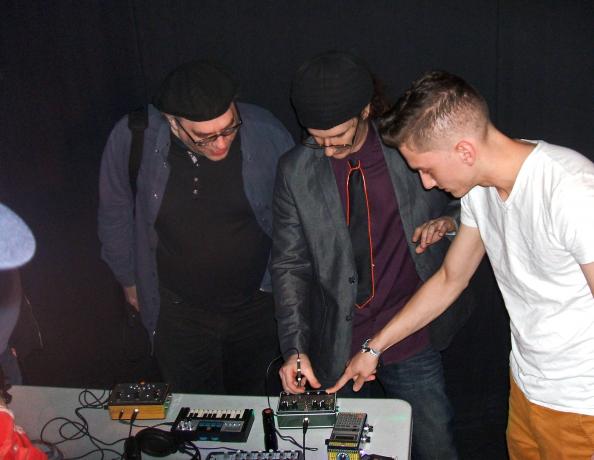
7. Forrest Mims is one of the true originals of electronic music and sound. He was building radios in the 1950s. During the Vietnam war, Mims began inventing sound devices that gave blind people spatial recognition. In the 1970s, Mims wrote electronics books for Radio Shack. These sold millions of copies to kids all over.
Mims signs a few electronics manuals he authored for a fan.
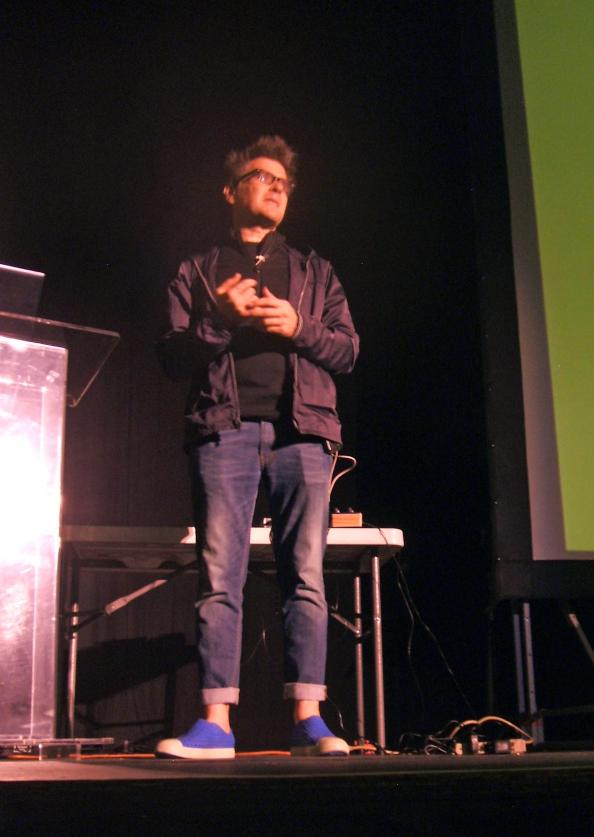
8. Mark Frauenfelder says makers constantly mix new and novel combinations of stuff available to most of us. The results are sometimes amazing. He says makers are not always focused on the end result, but have a willingness to make mistakes and follow their hunches.

9. In the 1980s, Forrest Mims invented a simple sound circuit synthesizer which later became known as the Atari Punk Console. He now converts real world data into music like the increase in cosmic radiation while flying in an airplane, or finds music in tree rings. But, he adds, flight attendants get really freaked out when you play with a geiger counter on a jet.
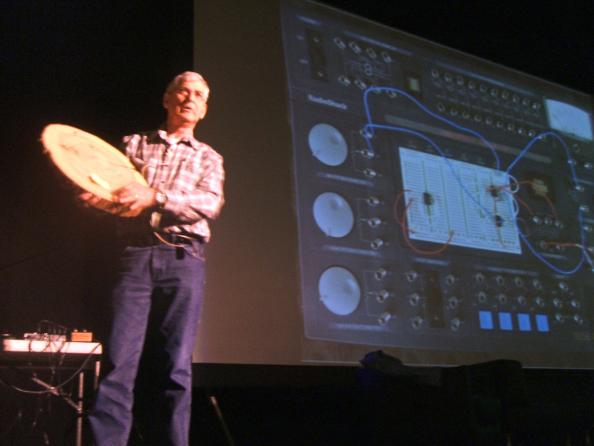
10. Thomas Zimmerman, who works with modeling human personalities in machines at IBM, says the future of electronics is not fully digital, but analog. He says the upcoming neurosynaptic chip works like a logic pipeline, like the synapses in the human brain. No computer coding necessary.
Of course, these are just a few brief highlights from one event at Moogfest.
To get the full picture, you really needed to be there in preson.